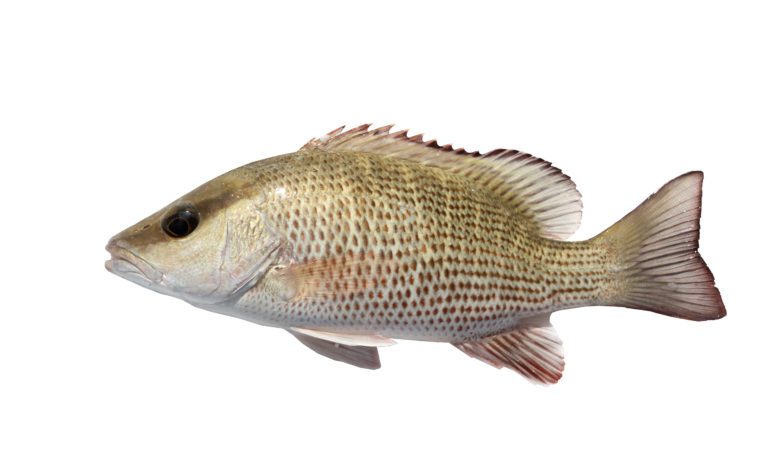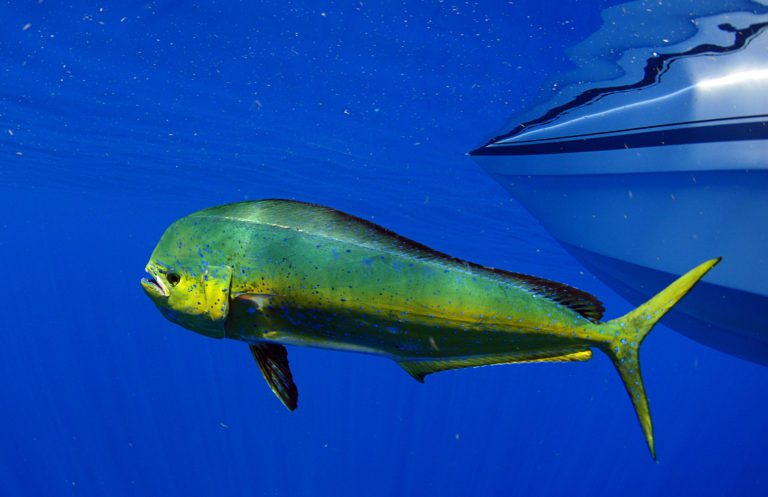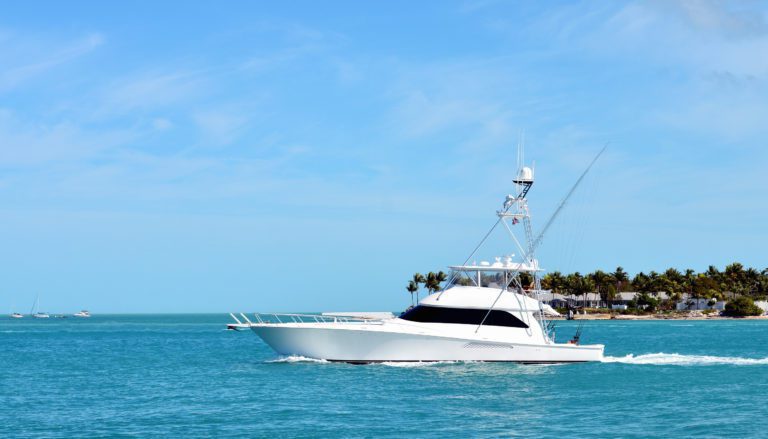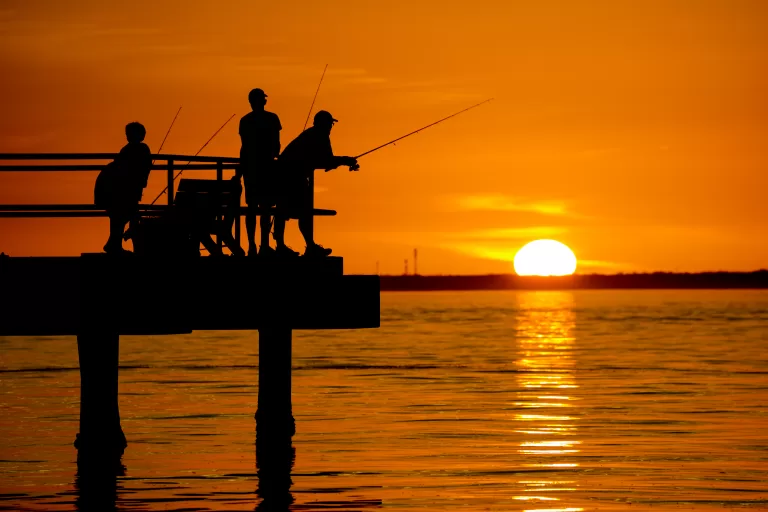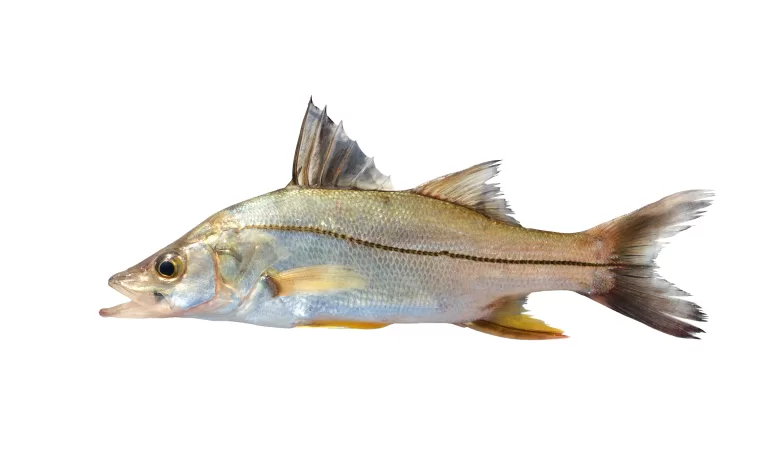Ultimate Guide to Sailfish Florida Fishing: Tips for an Epic Fishing Adventure
Seeking sailfish Florida fun? Learn when and where to cast your line for the ultimate catch from the rich waters of Stuart to the warm currents of the Keys. Grasp proven tactics for a memorable fishing venture, all unfolded in our straight-to-point guide primed just for enthusiasts like you.
Key Takeaways
- The best times to fish for sailfish in Florida are Jan, Feb, July, Nov, and Dec, ideally in waters over 75 degrees Fahrenheit. Prime locations include the Florida Keys, Stuart, Palm Beach area, Miami, and Key West, with Stuart known as the ‘Sailfish Capital of the World’.
- Successful sailfish catching techniques range from kite fishing and trolling with dead bait, to sight fishing and drift fishing. Each method requires specific strategies such as live bait positioning and adjusting to weather and current conditions for a better catch chance.
- Proper equipment is crucial in sailfish fishing; it starts with the right medium to heavy action rods and lever drag reels, continues with choosing between braided or monofilament lines, and ends with selecting the best live bait or artificial lures to mimic sailfish prey.
Sailfish Season in Florida: When and Where to Find Them
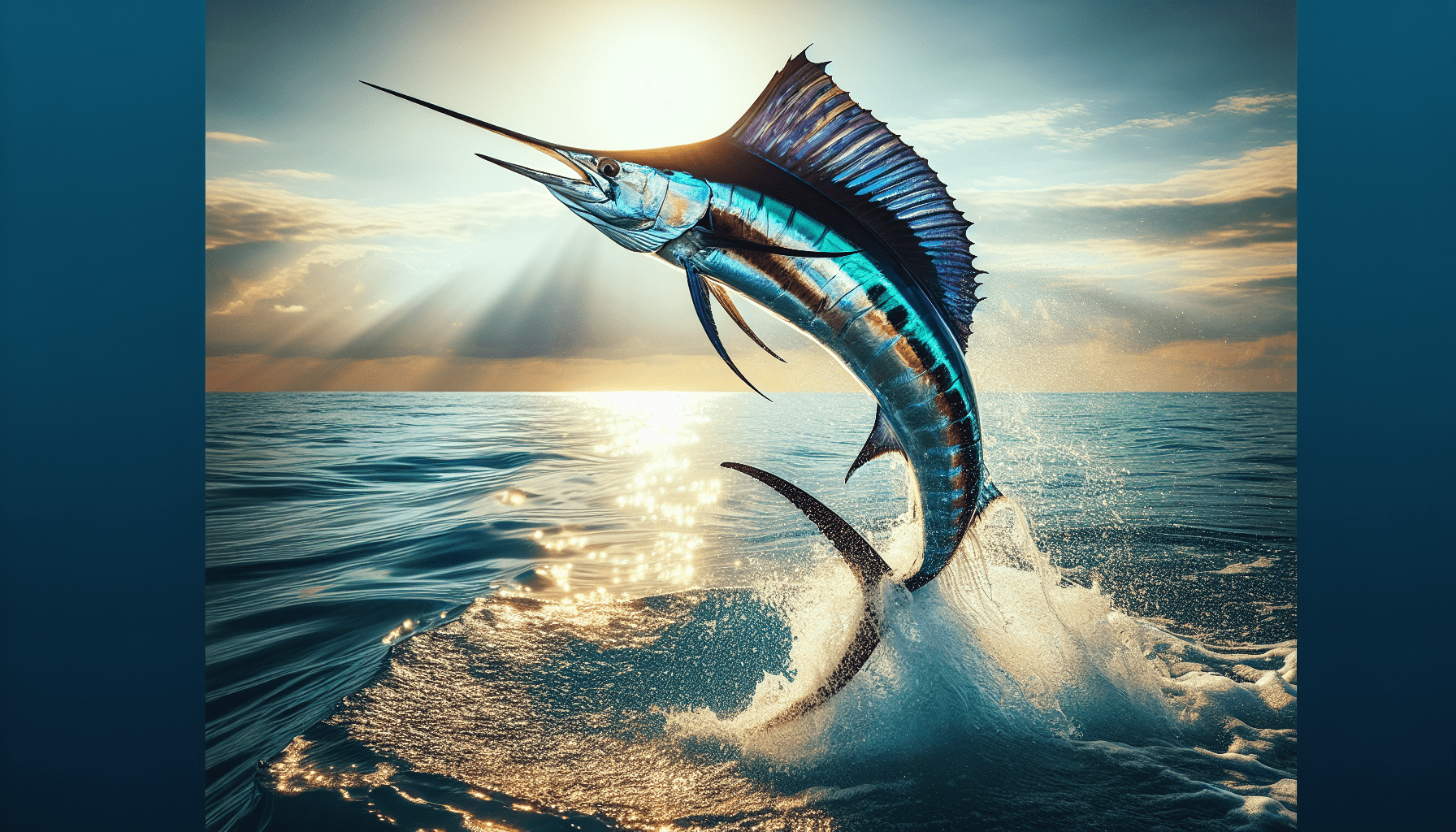
It’s no secret that the best months for sailfish fishing are:
- January
- February
- July
- November
- December
The season typically extends from November to March. But did you know that these majestic creatures are more likely to be found in waters with surface temperatures at least 75 degrees Fahrenheit? Yes, it’s these warm waters that are most conducive for feeding.
The influence of weather on sailfish fishing cannot be understated. The season can be heavily influenced by the advent of cold fronts, making weather forecasts your best friend when planning a fishing trip. As for the ideal locations, the go-to spots for sailfish fishing are:
- The Florida Keys
- Stuart
- The Palm Beach area
- Miami
- Key West
Stuart, in particular, is widely known as the ‘Sailfish Capital of the World’.
Techniques for Catching Sailfish in Florida

Capturing a sailfish greatly depends on the technique employed. Whether it’s trolling, site fishing, kite fishing, or live bait fishing, each method has proven effective in reeling in these high-flying fish.
A detailed examination of these techniques can help you catch multiple fish and secure your coveted catch.
Kite Fishing
Kite fishing, also known as fishing kites, is an exciting method that involves:
- Suspending live baits along a kite line to attract sailfish
- Using two kites, each with three release clips, to hang the live baits along the kite line
- Securing the baitfish to circle hooks with a bridle through the eye socket or just forward of the dorsal fin for a natural presentation
- Adjusting the kite line to help keep baits at the surface, making the leader nearly invisible
For effective kite fishing, here are some tips to keep in mind:
- Maintain stillness to allow the bait to swim naturally
- Spread the baits strategically at various depths to attract sailfish
- Enjoy the spectacular strike from a sailfish, which is often visible due to the bait’s surface position, making the experience even more thrilling.
Trolling with Dead Bait
Sailfish fishing has long benefited from the use of trolling dead bait, specifically the method of using circle-hooked ballyhoo. This approach has proven effective in areas such as Costa Rica and Guatemala. A well-rigged naked ballyhoo on a circle hook entices sailfish as it imitates natural swimming motions better than a bait that skips.
To increase the likelihood of attracting sailfish, try varying the distance of skipping and swimming ballyhoo to cover a wider area. Additionally, using a dredge as a teaser can create the illusion of a bait school, enticing sailfish even more. But remember, patience is key.
For successful sailfish hooking, it’s vital to perfect a drop-back and increase drag pressure, allowing the fish time to take the bait and ensuring a solid hook-set.
Sight Fishing
Sight fishing is an adrenaline-pumping method that involves casting live baits to visible sailfish, also known as sight fish. This technique is practiced by using spinning rods to cast live baits to spotted sailfish tailing down-sea.
Ideal conditions for sight fishing include an early morning incoming tide that brings clean water and ballyhoo over the reefs. Coupled with a low-angle sun, this illuminates the water and increases visibility, making sight fishing an exciting sailfish catching method.
Drift Fishing
Drift fishing is a technique that uses the natural currents and wind to present bait to sailfish. It involves using live baits deep with breakaway leads to achieve a natural bait presentation as the boat is carried along by the current.
The key to successful drift fishing is patience and understanding of the prevailing currents. By allowing the boat to drift naturally, you increase your chances of presenting your bait in the most enticing way to the sailfish. It’s a simple yet effective technique that requires a good understanding of the local waters and conditions.
Choosing the Right Equipment for Sailfish Fishing
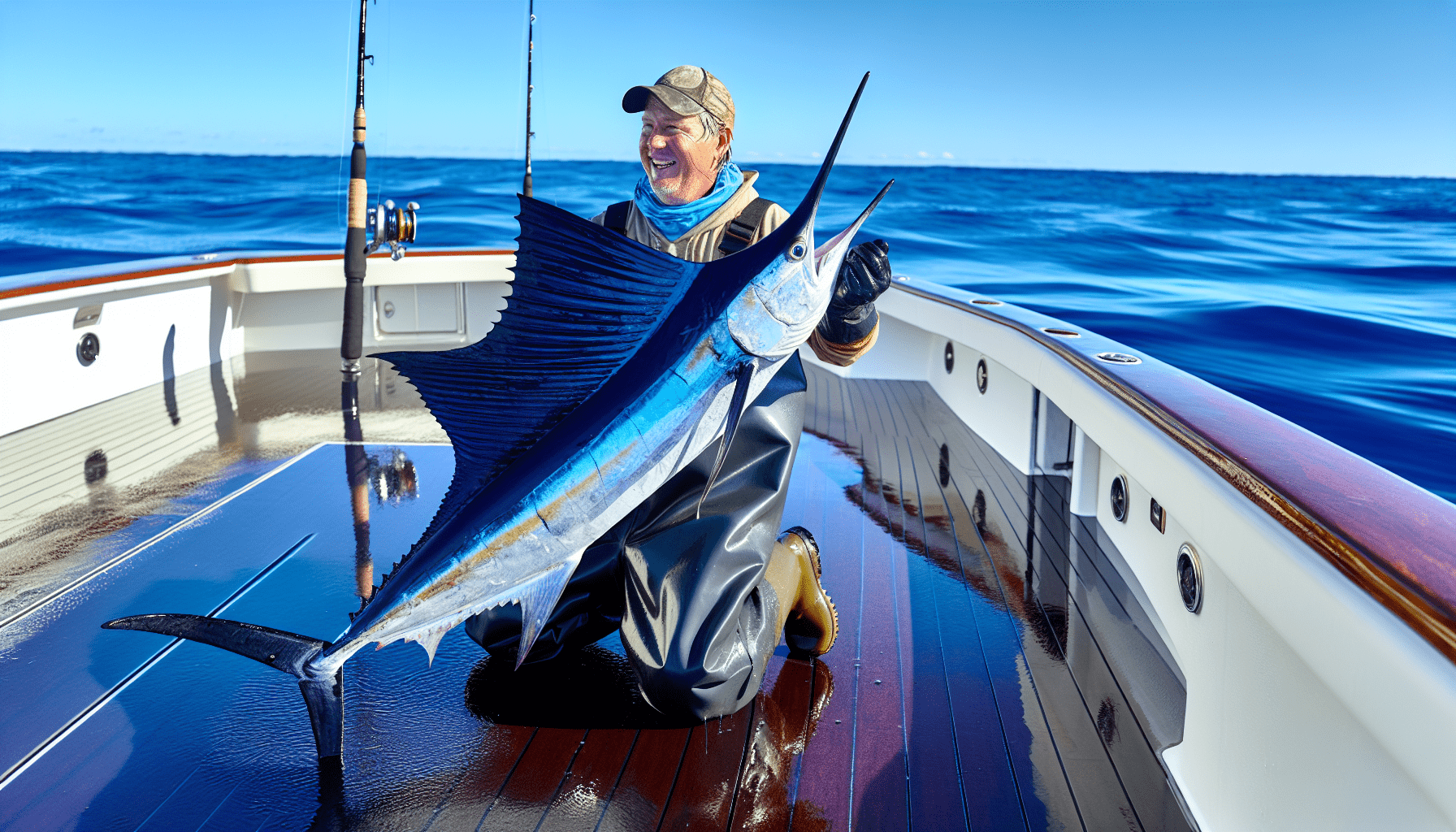
The selection of appropriate equipment is a significant factor in the success of any fishing expedition. Whether it’s the right lines, rods, reels, or bait, each component plays a vital role in your quest to catch a sailfish.
We’ll delve into the details of the perfect gear for sailfish fishing.
Rods and Reels
When looking at rods and reels for sailfish fishing, medium to heavy action rods with a length of 6 to 7 feet are recommended. These rods can handle the acrobatic fights typical of sailfish and are perfect for the task. A few rods and reels that are recommended are:
- Rods
- Reels
- Fin-Nor Marquesa Pelagic 30 (Kite Fishing)
- AVET LX 6.0 G2 SINGLE SPEED REEL (Kite Fishing)
- Daiwa Saltist 50H (felxible)
- Penn Fathom II FTH30SD (flexible)
Lever drag reels are also preferred as they allow for precise drag settings, which is critical when targeting powerful fish like sailfish.
Lines
The type of line you choose for sailfish fishing can significantly impact your success. Braided lines are beneficial due to their less drag in the water, which leads to sailfish dropping baits less frequently and improved stretch and hookup percentages. Additionally, using a light, quality fluorocarbon leader can greatly increase your chances of catching sailfish.
However, it’s not just about the type of line. Monofilament lines are favored for their high stretch and low sensitivity, making them suitable when using bait due to better shock absorbency. On the other hand, braided lines feature low stretch and high sensitivity, which aid in quicker, firmer hook sets, ideal when fishing with lures. A good rule of thumb is to fit your reel with 300 meters (328 yards) of braid or close to for kite fishing tactics, as well as handling the long powerful runs that sailfish are known for. The strength of the braid varies depending on how much fun you want to have! 80 lbs braid is on the safer side, adjust accordingly, the lower, the more skill required!
Bait Selection
Choosing the right bait is critical for attracting sailfish. Live bait options include:
- Ballyhoo
- Sardines
- Mullet
- Goggle-eyes
- Blue runners
- Threadfin herring
- Cigar minnows
- Large pilchards
- Speedos
These options offer a variety of choices to increase your chances of attracting sailfish.
Maintaining live bait in a lively state is key (obviously), as energetic baits emit vibrations that attract sailfish. In cases where artificial lures are employed, selection should focus on those that mimic sailfish prey in movement and appearance.
Optimizing bait presentation includes bridling live baits to enable a clear path for the circle hook to set properly in the sailfish’s jaw.
Identifying Sailfish Feeding Patterns and Behavior
A successful fishing trip hinges on a thorough understanding of the feeding patterns and behavior of sailfish. Sailfish attack bait schools and can be identified by disturbances on the water’s surface, indicating a potential feeding area or fishing grounds.
Being attentive to sailfish, a type of pelagic fish, that show activity at the surface is a good practice, as this suggests they may be feeding, providing a chance to stop and drift with live bait. Additionally, frigate birds diving and working the water signal the presence of baitfish and possibly sailfish, guiding anglers to sailfish feeding areas.
One must bear in mind that sailfish change their feeding patterns daily, thus keeping track of trends in sailfish bites and adjusting techniques is vital for enhancing the chances to catch sailfish.
Best Boats for Sailfish Fishing in Florida

Selecting the appropriate boat can greatly augment your sailfish fishing adventure. Center consoles are popular in sailfish fishing tournaments for their high cruising speeds and the ability to swiftly maneuver to the fishing hotspots.
The design of center consoles allows for easy maneuverability, which is essential during the dynamic fight with a sailfish. Innovative approaches such as positioning the fighting angler forward of the console have been used on center consoles to avoid entanglements and facilitate better communication between the captain and angler. These advantages make center consoles one of the best choices for sailfish fishing in Florida.
Top Sailfish Fishing Charters in Florida

Florida is home to numerous top-rated sailfish fishing charters, offering a range of experiences for anglers of all skill levels. Key West, for instance, boasts several top-rated sailfish fishing charters such as:
- Too Lethal Charters
- Boa Vida Charters – Jazmine
- Corsair 2 Sportfishing Key West
- Reel Easy Charters
These are just a few examples of the many sailfish fishing charters available in Florida.
These charters cater to a broad spectrum of fishing adventurers, from novices to seasoned anglers, offering experiences ranging from reef fishing to high-seas offshore excursions, including deep sea fishing. Highly experienced local captains such as Captain Scott, Captain Cory, and Captain John Mercurio are recommended for their in-depth knowledge and commitment to delivering a premium fishing experience.
Tips and Tricks from Expert Anglers
Expert advice can greatly boost your success in sailfish fishing. After hooking a sailfish, it’s advisable to keep most of the baits in play to anticipate additional strikes. Patience with the hookup ensures the fish is properly hooked.
During the fight with a sailfish, it’s important to maintain tension on the line by keeping the rod low and using the ocean to increase line tension if slack occurs. After releasing the sailfish, efficiently retie the hook and rebait to quickly return the setup to the water, maximizing further catching opportunities.
Florida Sailfish Regulations and Conservation
For a sustainable and enjoyable fishing experience, it’s vital to acquaint yourself with Florida’s sailfish regulations and conservation initiatives. The minimum size limit for sailfish in Florida is 63 inches lower jaw/fork length, and the daily bag limit is 1 billfish per person.
Sailfish intended for release may not be removed from the water, emphasizing catch-and-release conservation practices especially in federal waters or for vessels with a federal HMS permit. A Federal HMS Angling Permit is necessary for targeting sailfish in federal waters, and when fishing in state waters on a vessel with a federal HMS permit, the strictest regulations apply. *Be sure to verify local regulations based on where you are fishing*
Preparing for Your Sailfish Fishing Adventure
Any successful fishing adventure hinges on adequate preparation. Here are some items to include in your packing list:
- Windbreaker
- Long pants
- Lightweight shirts
- Swimsuit
These items will help you stay protected from the elements and allow you to enjoy any potential opportunities for swimming or snorkeling.
Don’t forget to pack the following protective gear for your fishing trip:
- Gloves for handling lines
- Non-skid rubber soled shoes for boat safety
- A waterproof jacket and rain pants
- Sun protection accessories including sunscreen, lip balm with SPF, a wide-brimmed hat, and polarized sunglasses
Also, remember to bring along a camera or smartphone to record your game fish adventure.
Sailfish Tournaments in Florida
For the competitive at heart, a number of thrilling sailfish tournaments are held in Florida. The Florida Sailfish Cup, for instance, is a season-long tournament that spans from November to May along the entire East Coast of Florida.
Other notable tournaments include the Silver Sailfish Derby in West Palm Beach, The Sailfish Challenge in Pompano Beach, and the Gold Cup Invitational Fishing Tournament in Palm Beach. These tournaments showcase the competitive spirit and camaraderie of the sailfish fishing community, making them an exciting part of the sailfish fishing experience in Florida.
Summary
Sailfish fishing in Florida is an adrenaline-filled adventure that offers an unforgettable experience for both novice and seasoned anglers. From understanding the sailfish season and identifying their feeding patterns to mastering various fishing techniques and choosing the right gear, sailfish fishing is a thrilling mix of skill, patience, and excitement.
Whether you’re planning to join a fishing charter, participate in a tournament, or simply enjoy a day of fishing, the thrill of reeling in a sailfish is an unmatched experience. So, gear up, set sail, and get ready for an epic fishing adventure in the sailfish capital of the world!
Frequently Asked Questions
Is it legal to keep sailfish in Florida?
No, it’s not legal to keep sailfish in Florida. The daily bag limit for all billfish in Florida is one per person, and there are size limits for sailfish as well.
What is the largest sailfish caught in Florida?
The largest sailfish caught in Florida weighed a whopping 126 pounds and was caught off Big Pine Key in the Lower Florida Keys. It’s an incredible feat considering sailfish can approach sizes of up to 11 feet long and 220 pounds.
Why can’t you catch sailfish?
Sailfish are difficult to catch because they are incredibly fast and powerful, making them challenging to hook and difficult to reel in once hooked. Good luck out there!
What is the best month to catch sailfish in Florida?
The best month to catch sailfish in Florida is typically from November to late March, after the first big cold front and until the last front blows through. So, plan your fishing trip accordingly!
What are some techniques for catching sailfish?
To catch sailfish in Florida, you can use techniques such as trolling, site fishing, kite fishing, live bait fishing, or drift fishing. Give these methods a try next time you’re out on the water!


